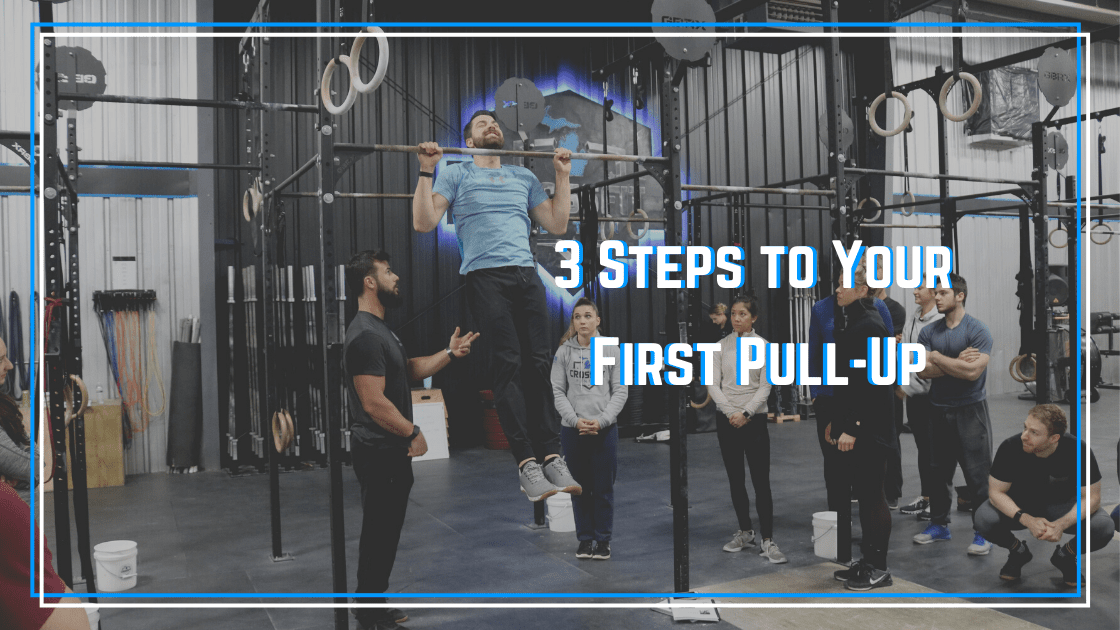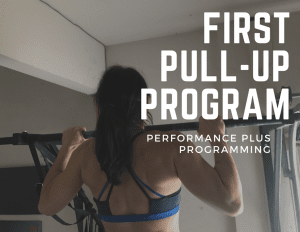An athlete getting their first unassisted pull-up is a significant accomplishment. For many, it takes months or years of training to build the strength to get their chin over the bar finally. For others, they spin their wheels, never making enough progress.
The three steps have worked time and time again to help HUNDREDS of athletes we’ve worked with accomplish this goal using our First Pull-Up Program.
Get Your First Pull-Up
Step 1: Stop Using Band Assisted Pull-ups
Band-assisted pull-ups can be great when used during metabolic conditioning (Metcon) workouts. They’ll allow an athlete that can’t perform pull-ups to keep their training intensity up. But in the long-term development of strict pull-up strength, they just don’t get the job done.
The problem is that the band provides lots of assistance at the bottom of the movement, where most athletes are weakest. So they end up never developing the strength they need in the bottom half of the exercises. Ultimately, they never progress away from the band-assisted variation.
Step 2: Train Strength Through Full Range of Motion
To address the above deficit that so many athletes have as a result of always using band-assisted pull-ups, we need to work on building strength throughout the entire pull-up motion. Two excellent variations help to do just that.
Toe-assisted pull-ups allow us to scale the pull-up easily. By pressing into the ground only as much as is needed, the athlete can build strength in all pull-up positions.
View this post on Instagram
Second, we utilize active hangs to work on scapular strength, grip strength, and the initial pulling motion of the chin-up.
Step 3: Build The Lats
Lastly, we often program accessory work to strengthen the lats as they are the most important muscle group in this movement. A few variations work well to isolate this muscle group.
Straight Arm Pulldowns
Straight arm pulldowns prevent the arms from taking over in this lat exercise. I typically emphasize a slight forward lean to make sure the shoulder is worked through the full range of motion. Like band-assisted pull-ups, the problem with this exercise is that the resistance is not equal throughout the entire motion, so I prefer these with a cable column if you have access but bands work fine if you do not.
Wide Grip Pulldowns
With wide grip pulldowns, I typically cue the athlete to think of pulling their elbow to their hip. This simple thought helps the athlete work the lats a bit more than their arms and does a better job developing back strength.
Ready to Get Your First Pull-Up?
These three steps should lay a solid foundation for you to begin making faster progress towards an unassisted pull-up. If you want a complete program that has helped hundreds finally get over the bar, check out our First Pull-Up Program.







